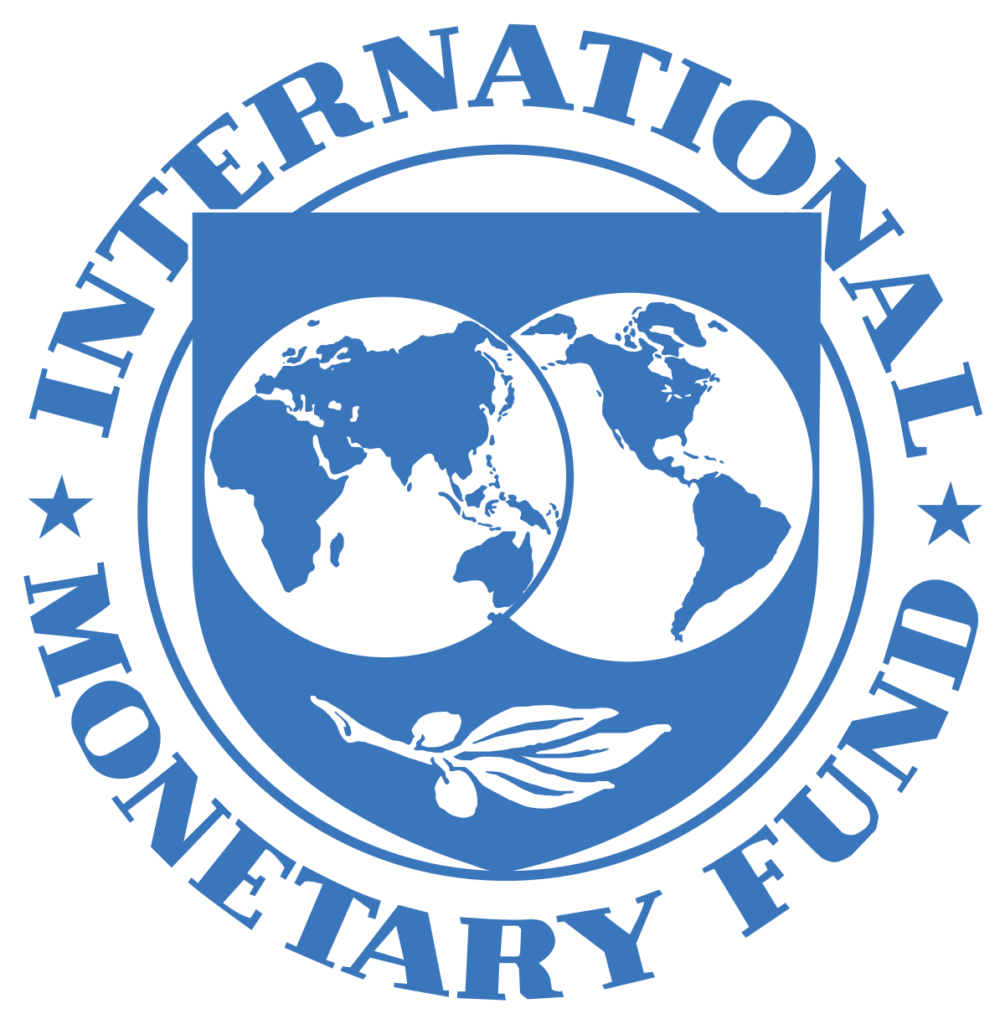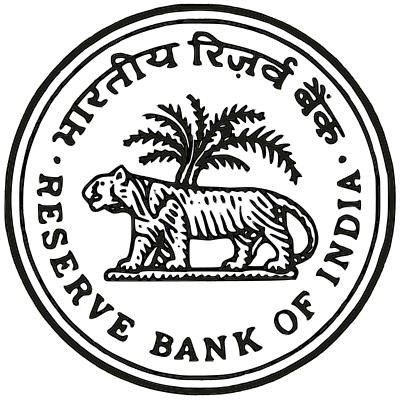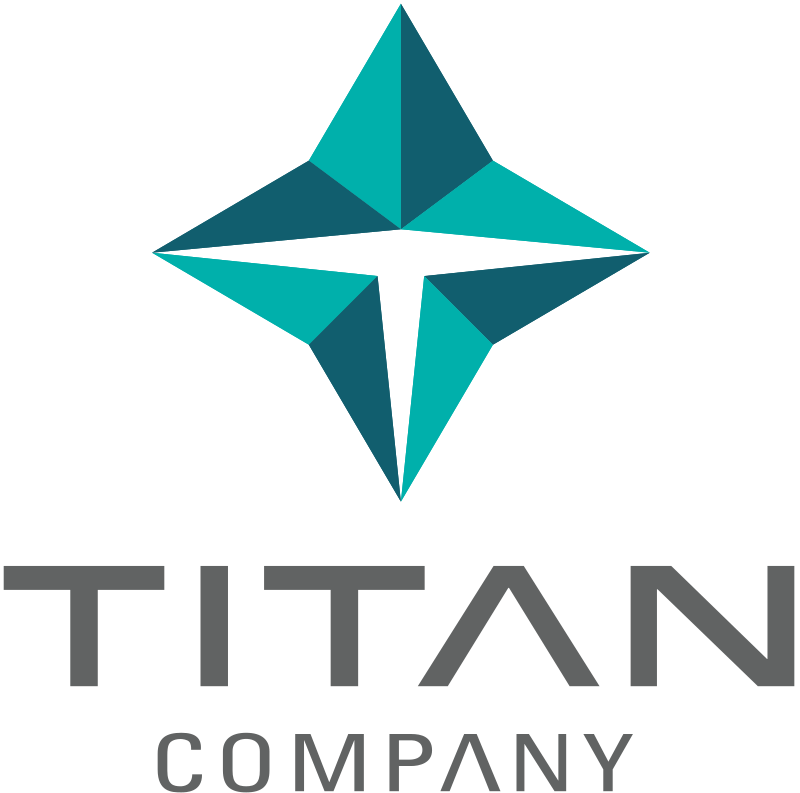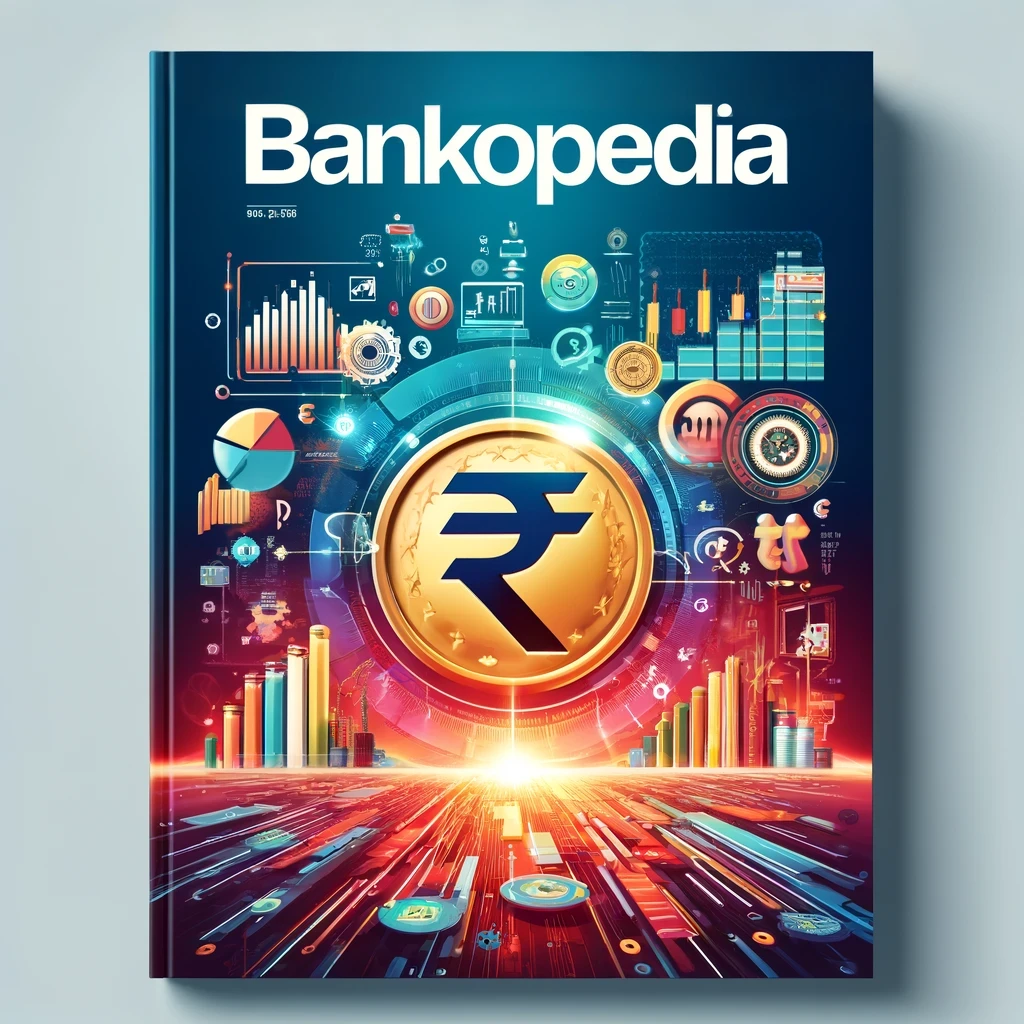Welcome to Daily Banking Digest, your premier source for the latest news and insights on April 17, 2024, focusing on banking, the economy, and finance. Our platform offers a comprehensive overview of the day’s most critical financial stories, market trends, and economic developments. Whether you’re a professional in the financial sector, an investor monitoring market movement, or someone interested in staying informed about the economic landscape, Daily Banking Digest provides reliable, up-to-date information.
Join our Telegram Channel for Daily PDF in your Inbox – Click Here
Table of Contents
Morgan Stanley India Economists: Rate Cuts No Longer an Option
Morgan Stanley India economists predict that the Reserve Bank of India (RBI) will not reduce policy rates in 2024-2025 due to changes in the US Federal Reserve’s rate path and improving domestic growth trends, which necessitate higher neutral real rates.

Key Points:
US Fed Rate Path: – Morgan Stanley’s Chief US Economist, Ellen Zentner, has revised the Fed’s policy path, indicating a delayed start to the easing cycle and a shallower easing cycle with fewer rate cuts.
Domestic Growth Trend: – India’s domestic growth is expected to remain robust, but a higher terminal Fed Funds rate poses external risks.
Currency and Inflation: – Strength in the US dollar could weigh on the Indian currency and increase imported inflation risks.
RBI Stance: – The confluence of global and domestic factors warrants the RBI maintaining a cautious stance. – Policy rates are expected to remain steady at 6.5%, implying real rates of 200 basis points.
Aditya Birla Capital Unveils ABCD: An Omnichannel D2C Platform Targeting 30 Million Users
Aditya Birla Capital (ABC) has launched its omnichannel D2C platform, ABCD, aiming to acquire 30 million new users within three years. The platform offers a comprehensive portfolio of 22 products and services, including UPI payments, loans, insurance, and spend analysis tools. ABCD is expected to drive growth and innovation within the ABC and ABG ecosystem, fostering synergies between financial services and the Group’s diverse businesses.

Key Points:
- Platform Launch: ABC has launched its omnichannel D2C platform, ABCD.
- User Acquisition Goal: ABCD aims to add 30 million new users over the next three years.
- Product Portfolio: The platform offers a portfolio of 22 products and services, including UPI payments, loans, insurance, and spend analysis tools.
- Omnichannel Experience: ABCD provides a seamless omnichannel experience, integrating digital and physical touchpoints.
- Growth Catalyst: The platform is expected to serve as a growth catalyst for ABC and the ABG ecosystem.
- Synergy and Innovation: ABCD will foster synergies between financial services and the Group’s diverse businesses, driving product innovation and value creation.
- Stock Performance: Aditya Birla Capital stock declined by 1.51% on the NSE following the announcement.
Indian Economy’s Resilience Demonstrated by Strong Export Performance: FIEO
Despite geopolitical challenges, India’s exports reached $776.86 billion in 2023-24, demonstrating the resilience of the economy. Electronic goods, pharmaceuticals, and engineering goods were key growth drivers, contributing to employment creation.

Key Points:
Export Performance: – India’s exports reached $776.86 billion in 2023-24, a slight increase from the previous year. – Goods exports in March 2024 were the highest during any month of FY 2023-24, at $41.68 billion. – Imports for March 2024 stood at $57.28 billion, resulting in a merchandise trade gap of $15.6 billion.
Growth Drivers: – Electronic goods, drugs and pharmaceuticals, engineering goods, iron ore, and ceramic products were the major growth drivers of merchandise exports. – These sectors are labor-intensive, contributing to employment creation.
Challenges and Recommendations: – The sector faces challenges such as geopolitical uncertainties and the need for easy and low-cost credit. – Marketing support and the conclusion of free trade agreements with the UK, Peru, and Oman are recommended to boost exports further.
Sri Lanka Prepares to Re-Engage with Bondholders
Sri Lanka is resuming debt negotiations with private creditors in London after reaching an agreement with bilateral creditors. The government aims to finalize a debt treatment plan before the IMF’s next meeting in June to secure the third tranche of its loan program.

Key Points:
Debt Negotiations: – Sri Lanka has reached an “in principle agreement” with bilateral creditors. – China has promised to treat Sri Lanka’s debt on comparable terms. – Negotiations with private creditors are ongoing, with the government seeking better terms compatible with its IMF program.
IMF Program: – Sri Lanka has reached a staff-level agreement with the IMF on the second review of its Extended Fund Facility. – The third tranche of $337 million will be released upon approval by the IMF management and executive board.
Economic Situation: – Sri Lanka’s economy shows signs of stabilization with improved fiscal and external balances. – Remittances and tourism have recovered, and debt service suspension continues. – Poverty is estimated to remain above 22% until 2026 despite the modest economic recovery.
Mutual Fund Assets Surge 35% to Unprecedented ₹53.4 Lakh Crore in FY24
The Indian mutual fund industry experienced a significant surge in assets under management (AUM) in FY24, reaching a record high of ₹53.40 lakh crore. This growth was driven by increased retail investor participation, buoyant equity markets, and the adoption of systematic investment plans (SIPs).

Key Points:
Growth in AUM: – AUM surged by ₹14 lakh crore or 35% year-on-year to ₹53.40 lakh crore in FY24. – This was the highest percentage gain since fiscal 2021, when the industry grew by 41%.
Investor Base: – The number of folios closed at a record high of 17.78 crore, adding an investor base of around 4.46 crore. – Women comprised about 23% of investors, while men accounted for around 77%.
SIPs: – Monthly net inflows through SIPs touched about ₹19,300 crore in March 2024. – Net inflows through SIPs for fiscal 2024 stood at ₹2 lakh crore, indicating increasing investor confidence and a disciplined investing approach.
Individual Investor Participation: – Individual investors played a key role in driving growth, especially in equity, hybrid, and solution-oriented schemes. – These schemes collectively accounted for nearly 58% of industry assets and 80% of folio count by March 2024.
Equity-Oriented Categories: – Equity-oriented categories witnessed a growth of 55% during fiscal 2024, reaching ₹23.50 lakh crore in assets. – Flexi cap category emerged as the largest fund category, followed by large-cap funds.
Debt Funds: – Debt funds saw moderate growth of around 7% during the fiscal to ₹12.62 lakh crore in assets.
Hybrid Funds: – Hybrid funds crossed the ₹7 lakh crore mark with asset gains exceeding 50%.
Passive Funds: – Passive funds continued to benefit from institutional investment flows, particularly into exchange-traded funds (ETFs). – ETFs had assets of ₹6.64 lakh crore as of March 2024.
S&P Global Ratings: India’s Economic Growth Boosts SBI’s Loan Growth, Asset Quality, and Profitability
S&P Global Ratings forecasts that State Bank of India’s (SBI) weak loans will remain stable at 2.5-3% over the next 12-18 months. The bank’s asset quality is expected to be stable, with credit costs remaining below 1%. SBI’s strong economic growth, deposit franchise, and risk-adjusted capital ratio support its credit profile. However, its capitalization remains weaker than that of large private banks in India. S&P Global Ratings maintains a ‘BBB-/Stable/A-3’ issuer credit rating for SBI, assuming organic loan growth of 15-16%, a margin decline of 10-20 basis points, and credit cost below 1%.

Key Points
Asset Quality – Weak loans (NPLs and restructured loans) to remain stable at 2.5-3% over the next 12-18 months. – Asset quality will likely be stable, with credit costs remaining below 1%.
Economic Growth – India’s robust economic growth supports SBI’s loan growth, asset quality, and profitability.
Deposit Franchise – SBI’s strong deposit franchise, being the largest in India with significant geographic and product diversity, underpins its credit profile.
Risk-Adjusted Capital Ratio – RAC ratio could stay moderate at 6.0-6.5% over the next two years. – SBI’s capitalization remains lower than that of large private banks in India.
Market Leadership – SBI is expected to maintain its market leadership in India’s banking sector over the next two years. – Funding and liquidity will stay strong, supported by high customer confidence.
Credit Rating – S&P Global Ratings’ base case assumes organic loan growth of 15-16%, a margin decline of 10-20 basis points, and credit cost below 1%. – Ratings could be upgraded if India’s sovereign credit ratings are raised. – Ratings could be lowered if India’s sovereign credit ratings are downgraded.
India Resumes Onion Exports to Sri Lanka, Increases Quota for UAE
India has permitted limited onion exports to the UAE and Sri Lanka, despite ongoing restrictions on outward shipments. The government has extended the export ban but allows exports based on specific requests from other countries. The government has also implemented measures to control onion prices, including export duties and minimum export prices.

Key Points:
Export Permissions: – India has allowed an additional 10,000 MT of onion exports to the UAE and 10,000 MT to Sri Lanka. – Exports will be facilitated through the National Cooperative Exports Limited (NCEL).
Export Restrictions: – The government has extended the ban on onion exports until further orders. – Exports are only allowed with permission from the central government based on requests from other countries.
Price Control Measures: – A 40% export duty was imposed on onions in August 2023 to check price rise. – A Minimum Export Price (MEP) of USD 800 per tonne was set in October 2023.
Exemptions: – Bangalore rose onion is exempted from the export duty.
Buffer Stock: – The government has been releasing onions from its buffer stock to stabilize prices. – The government aims to maintain 3 lakh tonne of onions as buffer stock in the 2023-24 season.
Onion Production: – Rabi onion accounts for 65% of India’s onion production and meets demand until the Kharif crop is harvested.
Nabard’s Role in Agricultural Lending: Clarification on Direct Loans to Farmers
Nabard, the National Bank for Agriculture and Rural Development, does not provide direct loans to individual farmers. Instead, it offers financial assistance to financial institutions and cooperatives involved in rural development. Nabard urges stakeholders to be cautious and avoid misinformation, emphasizing that accurate information can be found on its official website.

Key Points:
- Loan Provision: Nabard does not extend loans directly to individual farmers.
- Financial Assistance: Nabard provides financial assistance to financial institutions and cooperatives involved in rural development.
- Caution Against Misinformation: Nabard warns against believing or spreading misinformation about its loan services.
- Official Information Source: Accurate information can be obtained from Nabard’s official website.
- Commitment to Rural Development: Nabard remains committed to promoting rural development and agriculture through various initiatives and schemes.
- Stakeholder Cooperation: Nabard seeks cooperation in disseminating accurate information and discouraging misinformation.
- Contact Information: For further clarification, stakeholders can contact Nabard directly or visit their nearest office.
Tata-Tesla Partnership: A Strategic Triumph for India
India is poised to become a major player in the global semiconductor industry with the establishment of a new chip manufacturing plant in Gujarat and a strategic deal between Tata Electronics and Tesla. This development will not only enhance India’s digital sovereignty but also provide it with strategic leverage over other countries.

Key Points
India’s Semiconductor Ambitions – Tata Group and PSMC to establish India’s first commercial semiconductor fab in Dholera, Gujarat. – Central and state governments to subsidize up to 70% of the project cost.
Tata-Tesla Deal – Tata Electronics has reportedly signed a deal with Tesla to procure semiconductor chips for its worldwide operations. – This deal marks a significant milestone for India’s semiconductor industry.
Strategic Importance of Chips – Dependence on foreign chip supplies creates strategic vulnerabilities. – Countries that manufacture chips gain strategic power. – India’s chip production will enhance its influence with other nations.
Global Chip Race – US, South Korea, and Japan are investing heavily in domestic chip manufacturing to reduce reliance on China and Taiwan. – India is focusing on legacy chips, which account for 95% of global semiconductor consumption.
India’s Legacy Chip Strategy – India’s focus on legacy chips is a wise strategy, as they are less complex and in high demand. – India can become a reliable supplier of legacy chips to major Western manufacturers.
Conclusion India’s entry into the global semiconductor industry is a significant step towards achieving digital sovereignty and strategic power. The Tata-Tesla deal is a testament to India’s growing capabilities and the potential for its semiconductor industry to make a global impact.
Kotak Anticipates Enhanced Liquidity for Banks with India Index Inclusion
Kotak Mahindra Bank anticipates that the inclusion of Indian sovereign bonds in JPMorgan’s global indexes will enhance banks’ liquidity and reduce their reliance on costly deposits. The influx of overseas funds into India’s government debt market will allow banks to sell their bond investments, freeing up funds for lending.
Key Points:
1. Impact on Bank Liquidity: – Addition of Indian sovereign bonds to JPMorgan’s indexes will boost banks’ liquidity. – Banks can sell excess bond holdings to overseas buyers, unlocking funds for lending.
2. Reduction in Deposit Dependence: – Banks have been relying on costly deposits to fund loans. – The influx of overseas funds will ease this pressure, allowing banks to reduce their dependence on deposits.
3. Statutory Liquidity Ratio: – Kotak holds securities well above the minimum statutory liquidity ratio mandated by the Reserve Bank of India. – Liquidating excess holdings can provide a solution for meeting lending growth without a commensurate increase in deposits.
4. Liquidity Coverage Ratio: – Kotak’s daily average liquidity coverage ratio for the December quarter was 126.85%, exceeding the regulatory threshold of 100%.
5. Challenges in Deposit Attraction: – Indian lenders face challenges in attracting lower-cost deposits due to competition from the stock market and higher-yielding term deposits.
6. Impact on Credit Growth: – The loan-to-deposit ratio is at its peak, raising concerns about the impact on credit growth.
7. RBI Intervention: – RBI’s intervention to absorb dollar inflows will inject rupees into the system, further boosting liquidity.
8. Foreign Investment in Indian Bonds: – Foreigners have invested about $9 billion in India’s index-eligible bonds since JPMorgan’s inclusion announcement. – Foreign ownership of India’s sovereign debt market remains low, leaving ample scope for new buyers.
Indian Rupee Plummets to Historic Low Against US Dollar
The Indian rupee hit a record low against the US dollar on Tuesday due to a combination of factors, including a strong dollar, rising geopolitical tensions, and foreign portfolio investor sell-offs. The central bank reportedly intervened to prevent further depreciation, but the rupee is expected to remain volatile in the coming week.

Key Points:
Dollar Strength: – The US dollar has been strengthening against other currencies, making the rupee weaker in comparison.
Geopolitical Tensions: – Escalating tensions in the Middle East have contributed to the dollar’s strength and the rupee’s weakness.
Foreign Portfolio Investor Sell-Offs: – Foreign investors have been selling Indian assets, including stocks and bonds, which has put downward pressure on the rupee.
Central Bank Intervention: – The Reserve Bank of India (RBI) reportedly intervened in the market to sell dollars and prevent further depreciation of the rupee.
Market Volatility: – The rupee is expected to remain volatile in the coming week due to uncertainty in the dollar index and the USD-INR pair.
Economic Risks: – A stronger dollar could increase the risk of imported inflation and pose challenges for the Indian economy.
RBI Stance: – The RBI may need to adopt a cautious stance to manage the impact of a strong dollar on the rupee and the economy.
IMF Projects India’s GDP Growth to Reach 6.8% in FY25
The International Monetary Fund (IMF) has revised its growth projection for India to 6.8% for the current fiscal year, citing strong domestic demand and a rising working-age population. However, the projection remains lower than those of the Asian Development Bank (ADB) and the Reserve Bank of India (RBI). The global economy is expected to grow at 3.2% in 2023, 2024, and 2025, with advanced economies experiencing a slight increase in growth and emerging market and developing economies maintaining stable growth.

Key Points:
IMF Growth Projection for India: – Revised to 6.8% for FY24, up 30 basis points from previous projection – Projected to remain strong at 6.5% in FY25
ADB and RBI Growth Projections for India: – ADB: 7% for FY24 – RBI: 7% for FY24
Global Economic Growth: – Estimated at 3.2% in 2023, 2024, and 2025 – Advanced economies expected to see slight increase in growth – Emerging market and developing economies expected to experience stable growth
Factors Driving India’s Growth: – Strong domestic demand – Rising working-age population
Importance of Monsoon for India’s Economy: – Above-normal monsoon projected for 2024 – Critical for rural demand and overall economic growth
RBI Urges Banks to Consider Establishing a Central Fund for Internal Ombudsman Compensation
The Reserve Bank of India (RBI) is exploring the establishment of a central fund to pay the salaries of banks’ internal ombudsmen (IOs) to enhance their independence and protect customer rights. The RBI has also recommended the appointment of sign language interpreters in banks to assist hearing and speech-impaired customers.

Key Points:
Central Fund for IO Salaries:
- RBI proposes a central fund to pay IO salaries, similar to the Consolidated Fund of India for government officials.
- Aims to enhance IO independence and protect customer rights.
Sign Language Interpreters:
- RBI recommends appointing sign language interpreters in banks to facilitate communication with hearing and speech-impaired customers.
Customer Complaints:
- Customer complaints with the RBI ombudsman increased by 68% in 2022-23.
Implementation Challenges:
- Senior bank executive raises concerns about implementation issues due to varying compensation structures and working contracts across banks.
Kanungo Committee Report:
- The Kanungo Committee recommended the creation of a fund by the Indian Banks’ Association (IBA) to pay IO salaries directly.
Experience Affordable Aerial Adventures: Fly for Just Rs 150 for 50 Minutes
The Regional Connectivity Scheme (RCS) offers low-cost airfares on select routes in India. Under this scheme, base airfares for 22 routes are less than Rs 1,000, with the lowest being Rs 150 for the Lilabari-Tezpur flight. These flights are typically operated by Alliance Air and have a duration of around 50 minutes.
Key Points:
Base Airfares: – Base airfares for 22 routes are less than Rs 1,000. – The lowest base airfare is Rs 150 for the Lilabari-Tezpur flight.
Convenience Charge: – Convenience charges are added to the base fare when booking a ticket.
Flight Duration: – RCS flights on these routes typically have a duration of around 50 minutes.
Routes with Low Base Airfares: – Majority of the routes with base airfares between Rs 150 and Rs 199 are in the North East. – Some routes in the South, such as Bangalore-Salem and Cochin-Salem, also have low base ticket prices.
Specific Base Airfares: – Guwahati-Shillong: Rs 400 – Imphal-Aizawl, Dimapur-Shillong, Shillong-Lilabari: Rs 500 – Bangalore-Salem: Rs 525 – Guwahati-Pasighat: Rs 999 – Lilabari-Guwahati: Rs 954
RCS Incentives: – RCS flights receive various incentives, including no landing or parking charges.
UDAN Launch: – The UDAN scheme was launched on October 21, 2016, to promote regional air connectivity and affordability.
RBI Mandates Due Diligence for Payment Aggregators in Merchant Onboarding
The Reserve Bank of India (RBI) has issued directives to regulate the payment ecosystem by requiring payment aggregators to conduct due diligence on merchants and monitor their transaction activity. Non-bank payment aggregators must register with the Financial Intelligence Unit-India (FIU-IND). Additionally, non-bank physical Point of Sale (PA-P) payment aggregators must maintain a minimum net worth of Rs 15 crore and Rs 25 crore by March 31, 2028.

Key Points:
- Due Diligence and KYC Norms: Payment aggregators must conduct due diligence on merchants as per RBI norms within 3 months and complete the process by September 30, 2025.
- Transaction Monitoring: Aggregators must monitor merchant transaction activity and migrate them to higher categories of due diligence based on patterns.
- FIU-IND Registration: Non-bank payment aggregators must register with FIU-IND and provide necessary information.
- Minimum Net Worth for PA-P: Non-bank PA-P aggregators must have a minimum net worth of Rs 15 crore at authorization and Rs 25 crore by March 31, 2028.
- Wind-Up of Non-Compliant PA-P: Non-bank PA-P aggregators that fail to comply with net worth requirements or apply for authorization must wind up their operations by July 31, 2025.
- Account Closure: Banks must close accounts used for PA activity by non-bank PA-P aggregators by October 31, 2025, unless evidence of authorization application is provided.
Fitch Maintains Credit Ratings for Public Sector Banks
Fitch Ratings has affirmed the ratings of several public sector banks in India, including Canara Bank, State Bank of India, Bank of Baroda New Zealand, Union Bank of India, Punjab National Bank, Bank of India, and Bank of India New Zealand. The ratings are linked to India’s sovereign rating and have a stable outlook.

Key Points:
- Rating Affirmations: Fitch has affirmed the ratings of the following banks:
- Canara Bank
- State Bank of India
- Bank of Baroda New Zealand
- Union Bank of India
- Punjab National Bank
- Bank of India
- Bank of India New Zealand
- Viability Rating (VR): Fitch has affirmed the VR of all the banks at ‘bb’.
- Government Support Rating (GSR): Fitch has affirmed the GSR of all the banks at ‘bbb-‘.
- Driving Factors for SBI’s Ratings:
- Government support
- Strong operating environment
- Dominant presence
- Double-digit loan growth
- Lower impaired loan ratio
- Strong profitability
- Dominance of deposits
- Modest capital buffers
- Driving Factors for Canara Bank’s Ratings:
- Strong franchise
- Growing risk appetite
- Driving Factors for Bank of Baroda New Zealand’s Ratings:
- Loan growth above peers
- Strong local reach
- Driving Factors for Punjab National Bank and Union Bank’s Ratings:
- Robust funding and liquidity
RBI Proposes Draft Guidelines for Offline Payment Aggregators, Mandates ₹15 Crore Net Worth
The Reserve Bank of India (RBI) has issued draft regulations for Payment Aggregators (PAs) to enhance the security and stability of the payment ecosystem. These regulations cover physical Point-of-Sale (PoS) activities, net worth requirements, and licensing procedures.

Key Points:
1. Regulation of Physical PoS Activities – RBI has announced regulations for offline PAs who handle proximity/face-to-face payments. – PAs must seek RBI approval before commencing physical PA activities.
2. Compliance Deadlines – PA-P banks must comply with the final norms within three months of issuance. – Non-bank PA-P entities must inform RBI of their intention to seek authorization within 60 days and submit an application by May 2025.
3. Net Worth Requirements – Non-bank PA-Ps must have a minimum net worth of ₹15 crore at the time of application and ₹25 crore by March 31, 2028. – New non-bank PA-Ps must have a minimum net worth of ₹15 crore and increase it to ₹25 crore within three years of authorization.
4. Agent Engagement – Non-bank PAs can engage agents to assist merchants with onboarding, subject to proper due diligence.
5. Card-on-File Data Storage – Entities in the card transaction chain, except card issuers and networks, are prohibited from storing card-on-file data from August 1, 2025. – Limited data (last four digits of card number and card issuer’s name) can be stored for tracking and reconciliation purposes.
Shipping Advisory Issued for West Asia Routes
India’s Shipping Ministry has raised concerns about the escalating tensions in West Asia, particularly Iran’s missile attack on Israel. The ministry has issued advisories for ships entering Indian waters, including mandatory security drills and increased Navy presence. The Strait of Hormuz, a strategic choke point, is a major concern, as diversion through the Cape of Good Hope would increase costs and delays. The ministry anticipates a 15-30% increase in freight costs due to rerouting, increased security measures, and war risk premiums.
Key Points
Escalating Tensions in West Asia – Iran’s missile attack on Israel has heightened tensions in the region. – The Strait of Hormuz, connecting the Persian Gulf to the Gulf of Oman, is a strategic choke point. – Diversion through the Cape of Good Hope is time-consuming and costly.
Shipping Advisories – Varied reporting protocols for ships entering Indian waters. – Mandatory security drills. – Increased Navy presence. – Communication protocol for security incidents. – Reporting of suspicious incidents.
Impact on Freight Rates – Rerouting of vessels will increase costs. – Increased streaming run-time will delay scheduling. – Deployment of armed guards will raise costs. – War risk premiums will increase. – Protection and indemnity insurance costs will rise.
Historical Freight Rates – Freight rates have increased year-over-year due to the Red Sea crisis. – Rates have fluctuated in recent months, reaching a high of $3,900 per container in February 2024. – Recent tensions are expected to further increase rates on specific routes.
Vodafone Idea Secures Rs 5,400 Crore from Anchor Investors Ahead of IPO
Vodafone Idea (Vi) raised Rs 5,400 crore from anchor investors, making it the third-largest anchor book in India. The funds will be used to repay vendors, strengthen its 4G network, and launch 5G services. Despite the funding, Vi faces challenges due to subscriber losses and high debt.

Key Points:
Anchor Book: – Raised Rs 5,400 crore from 60 anchor investors. – Over 70% of investors are foreign institutions. – GQG Partners applied for over $400 million.
Follow-on Public Offering (FPO): – Plans to raise Rs 18,000 crore through India’s largest FPO. – Issue priced at Rs 10-11 per share. – Opens on April 18 and closes on April 22.
Funding Plan: – Equity funding of Rs 20,000 crore, including preferential issue to promoter. – Dilution of around 26%. – Rs 25,000 crore of debt.
Challenges: – Subscriber losses to Jio and Airtel. – High debt of Rs 2.14 lakh crore. – Cash shortfall in FY26 if government dues are not converted into equity.
Bankers: – Axis Capital, Jefferies, and SBI Capital appointed as bankers to the public offer.
Foreign Investors and LIC’s Strategic Moves in Adani Stocks During Q4 2023-24
Foreign institutional investors (FIIs) and mutual funds increased their stakes in several Adani stocks during the March quarter, while LIC’s patience in holding Adani stocks paid off with a significant increase in the market value of its holdings. Adani Ports has been the biggest gainer in the group so far in the calendar year.
Key Points:
FII Ownership: – FII ownership increased in 6 out of 10 Adani stocks in the March quarter. – Adani Ports saw a 26 bps increase in FII ownership to 14.98%. – Adani Green Energy and Adani Wilmar also saw a 12 bps increase in FII holding.
Mutual Fund Ownership: – Mutual funds raised bets on ACC, Adani Enterprises, Adani Green Energy, and Adani Power.
Retail Investor Ownership: – Retail investors booked profits in all stocks of the conglomerate except Adani Energy.
LIC’s Investment: – LIC reduced stake in both ACC and Ambuja Cements. – The value of LIC’s investment in 7 Adani companies increased by Rs 8,900 crore in Q4. – Adani Ports and Adani Enterprises are among LIC’s biggest bets within the conglomerate.
Adani’s Status: – Adani has cemented its status as India’s premier infrastructure conglomerate. – US brokerage firm Cantor Fitzgerald initiated coverage with overweight rating on Adani Enterprises, arguing that the group has become “too big to ignore.”
Indian Companies Titan, Murugappa Eye iPhone Camera Parts Production to Reduce Reliance on China
Apple is in advanced discussions with Murugappa Group and Titan Company to assemble and potentially manufacture components for iPhone camera modules in India. This move aims to deepen Apple’s Indian supplier ecosystem and reduce its reliance on China.

Key Points:
Camera Module Assembly: – Apple currently lacks Indian suppliers for camera modules used in its iPhones. – Partnering with Titan or Murugappa Group could address this issue. – Apple plans to finalize its partner within 5-6 months.
Camera Module Challenges: – Camera module assembly is a critical component and a major challenge for Apple in India.
Titan’s Expertise: – Titan specializes in precision component manufacturing for watches and jewelry.
Murugappa Group’s Acquisition: – Murugappa Group acquired Moshine Electronics in 2022, diversifying into the electronics and components space.
Potential for End-to-End Manufacturing: – Murugappa Group could potentially become an end-to-end player in Apple’s India value chain, including image sensor manufacturing. – Tata group could also progress from assembly to manufacturing in the future.
Government Incentives: – Tata and Murugappa Group have qualified for government incentives to set up semiconductor chip assembly units in India.
Diversifying Supply: – Image sensor chips are the most costly component of camera modules. – Apple depends on imports or local manufacturing for these components. – Sourcing locally can reduce costs and dependence on Chinese suppliers.
Apple’s India Push: – Apple is aggressively pursuing manufacturing in India through its PLI scheme. – Foxconn, Pegatron, and Tata Electronics have significant presence in India. – Apple is targeting production of nearly Rs 1 lakh crore worth of iPhones in India by March 2025.
China’s Economy Expands 5.3% in Q1 2024 Despite Ongoing Property Sector Challenges
China’s economy grew by 5.3% in the first quarter of 2024, exceeding expectations despite ongoing challenges in the property market and subdued domestic demand. The growth was driven by a rebound in the industrial sector and an improvement in the service sector. However, concerns remain about the property market crisis and its potential impact on the economy.

Key Points:
GDP Growth: – GDP grew by 5.3% year-on-year to 29.63 trillion yuan in the first quarter of 2024. – The pace accelerated from 5.2% overall GDP growth for 2023.
Quarterly Growth: – The economy expanded by 1.6% on a quarterly basis in the first three months of 2024.
Positive Factors: – Rising production demand – Stable employment and prices – Growing market confidence
Property Market Crisis: – Home prices fell at a faster pace for more than eight years. – Property investment fell 9.5%. – The crisis remains a challenge for China’s real estate firms.
Credit Ratings Downgrade: – Fitch Ratings lowered its outlook for China’s state-owned banks from stable to negative. – The downgrade reflects concerns over increasing risks to China’s finances and Beijing’s capacity to support its biggest lenders.
Growth Drivers: – Rapid growth in the services sector – Increased overseas demand driving export growth in the industrial sector
Headwinds: – Potential trade friction in the West, including additional tariffs
US Trade Representative Welcomes India’s Tariff Removal on Agricultural Products
US Trade Representative Katherine Tai announced that India’s removal of retaliatory tariffs on US products has improved market access for chickpeas, lentils, almonds, walnuts, apples, turkey, duck, blueberries, and cranberries, benefiting farmers in various states across the country. This resolution of WTO disputes between India and the US has resulted in increased trade opportunities for both nations.
Key Points:
Improved Market Access for US Products:
- India has removed retaliatory tariffs on chickpeas, lentils, almonds, walnuts, and apples, benefiting farmers in Michigan, Oregon, and Washington.
- India has also agreed to reduce tariffs on turkey, duck, blueberries, and cranberries, benefiting farmers in North Carolina, Pennsylvania, Virginia, and Wisconsin.
Resolution of WTO Disputes:
- India and the US have resolved their last outstanding WTO dispute, leading to the reduction of tariffs on certain US agricultural products.
- The resolution of six WTO disputes occurred during PM Modi’s state visit to the US in June.
Benefits for US Farmers:
- The removal of tariffs has improved market access for US farmers, providing them with increased opportunities to export their products to India.
- Farmers in various states, including Michigan, Oregon, Washington, North Carolina, Pennsylvania, Virginia, and Wisconsin, are benefiting from the increased trade.











